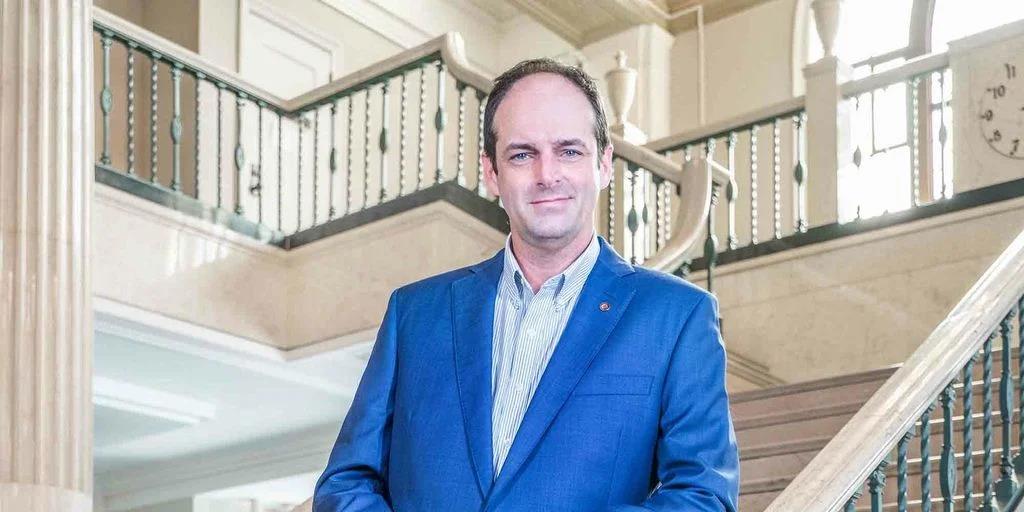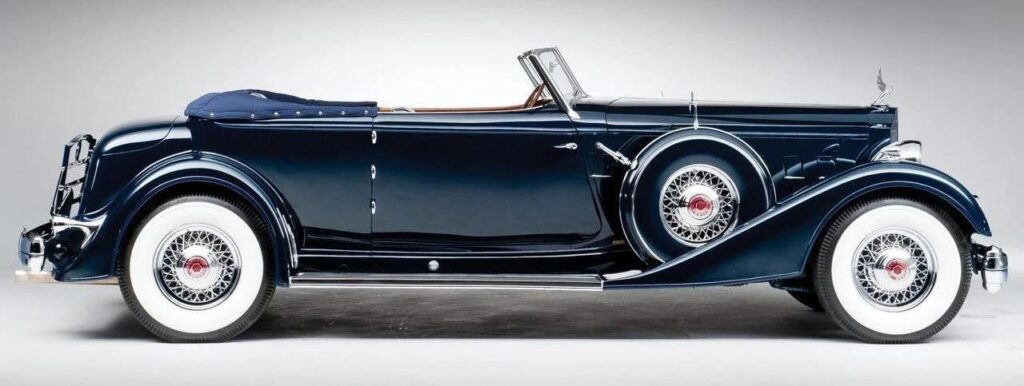PACKARD MOTORS SELECTS PRESTIGE ADVANCED AS DEVELOPMENT PARTNER

In Detroit, the Packard name is associated more with sprawling ruin on the city’s east side than the vehicle last built there 70 years ago. Scott Andrews, owner of Packard Motors, is looking to change that. An auto mechanic by trade, Andrews, 49, purchased the Packard name in 2019 and four years later opened a store in Ohio, the birthplace of the automaker once known as the “American Rolls Royce.” Now, Andrews is hoping to build a business on the Packard name and eventually start manufacturing Packard Victorias. The company already makes Packard-branded watches, which conjures up similarities to Detroit-based Shinola’s roots in resurrecting an iconic brand name.
Andrews, who employs around 10 people in Ohio, is scoping out Detroit for a site to build the vehicles — and for investors in the company’s first $10 million fundraising round. He even looked at the old Packard Plant site, where Detroit is looking for a developer, but never had the chance to put together a legitimate proposal.
Packard Motors is tapping Prestige Advanced, a renowned prototype manufacturer in Madison Heights MI, to get the project rolling. After meticulously scanning a 1934 Packard Victoria, Prestige Engineers are working up CAD designs and planning to complete the first prototype in 10-12 months, said Bob Fehan, general manager at Prestige.
From there, the companies would create entirely new tooling and stampings — an investment of many millions of dollars — to launch production. Fehan said engineers are staying true to the Packard’s original form but modernizing it with better handling and comfort and dropping an LS3 Corvette engine under the hood.
“It’s really special,” Fehan said. “We’ve never gone into the archives and pulled a vehicle forward like this. It’s all modernistic future stuff.”
Crain’s spoke with Andrews about his plan to resurrect the iconic vehicle. The following conversation has been condensed and lightly edited for clarity.
Tell me how this all started.
So, I have an automotive background. I’m an auto mechanic, always did it as a hobby — restorations, engines, all that good stuff. I was taking my kids out to something here in Ohio, and on the side of the road I saw a car for sale, and it said Packard. And up to that point, I wasn’t too sure what that was. I called my father, and he says, “Oh my goodness, let me tell you.” That sparked my interest, and once I went to the National Packard Museum and learned the history of the Packard brothers and what Packard did for the world and still does, I was just blown away and fell almost immediately in love with the brand.
I began the revival in 2019 down in Ohio, actually, rebirthed it in its hometown of Warren through the National Packard Museum. I’m a board member there. I procured the rights to the vehicles, and it’s really come a long way. I got to know some people in the Detroit area — my wife’s from Jackson, actually — and started networking.
How did you get the name?
Just browsing through the internet researching this stuff — I love the history — I found the rights had been for sale for over 20 years and decided to pounce on it. I believe the automotive market needs resuscitation, and Packard’s the one to do it, given what it did for the auto industry in the past. I wanted this to stay in the United States. It’s an American company, all-American brand. I did not want to see it sold off somewhere and become yet another electric vehicle failure. As I put it, Packard fell asleep in Detroit, and it keeps trying to wake itself up in Detroit. As much as we try to do some things down here in Ohio, lots of activity keeps pulling me up into Detroit, the greater Detroit area and into Michigan. We get inquiries from all over the world about when cars will be available.

1934 Packard Victoria model vehicle built by the Dietrich company in the 1930s.
Is the ultimate goal to produce vehicles?
We’re a small crew, a little over 10. We have quite a few big initiatives in the works. A lot of preparation. I don’t believe in a “build it and they will come” approach. Instead, we built a concept vehicle, a 1934 roadster with some new innovations on it. We debuted that down at our store in Medina, Ohio, a year ago. The response was overwhelming. Fox News had us on. Even through this year, we’ve had people walking through the store, sometimes with checkbooks wide open, asking, “When can I buy a Packard?” The Victoria is what we’re building. We have 20 people who want one of those. So what we’re doing is, I’m launching this with the Low Production Vehicle Act, which means I can produce 325 re-creations of that vehicle without all the federal regulations. So the cost to market is substantially lower than designing a new car and bringing it to market. They are not restorations. We are literally using 135,000 original Packard blueprints. We brought an original car into the shop and 3D scanned the whole thing.
Have you built one yet?
In process. They will be built in Michigan. We’re just exiting the angel stage of investing, and we’re now about to enter the first full on seed stage.
Does the company currently function as a memorabilia business?
It functions as a Packard Automotive business, and what I mean by that is we started out selling the brand. For example, we have a line of high-end watches. Those have sold very well. We got the brand back out there. In a revival effort like this, you want to reawaken the brand first and see what kind of reaction you get before you go into full-blown manufacturing. So that’s what we’ve been doing, and we’re now at the stage where we have people saying to us, “We love that car. When can I have one?” So now that I’ve got the demand, now we’ll go ahead and start making cars. It’s not just a car company. Packard was the first in a lot of things, and set the direction in a lot of ways for the marketplace, the automotive sector. What I told the team is that Packard has to do that again, or it’s not Packard. So (we will have) some really cool new stuff that’s coming out to the marketplace with us, along with the cars, including some internet-related technologies that apply to the racing circuits and some other automotive products. So there will more than just cars when it comes to Packard.
Is the business profitable?
Yes, but we don’t give out figures. One of the problems that you’ll find Packard had in the Depression era is, “How do we keep a luxury car maker going?” They had no choice because all they did was make cars … So when I revived Packard, right away, I said that we’re going to do more things than just make cars and diversify the income streams. So we do already have diversified income streams. It’s doing good, and with our projections of what’s about to come down the pike, I think we’re going to really wow the world.
By Kurt Nagl
Kurt Nagl is a reporter covering manufacturing — particularly the automotive industry’s transition to electrification, the impact on the supply base and what it means for the state — as well as the business of law. Before joining Crain’s Detroit Business, he reported in Iraq and China and for various publications in Michigan.
